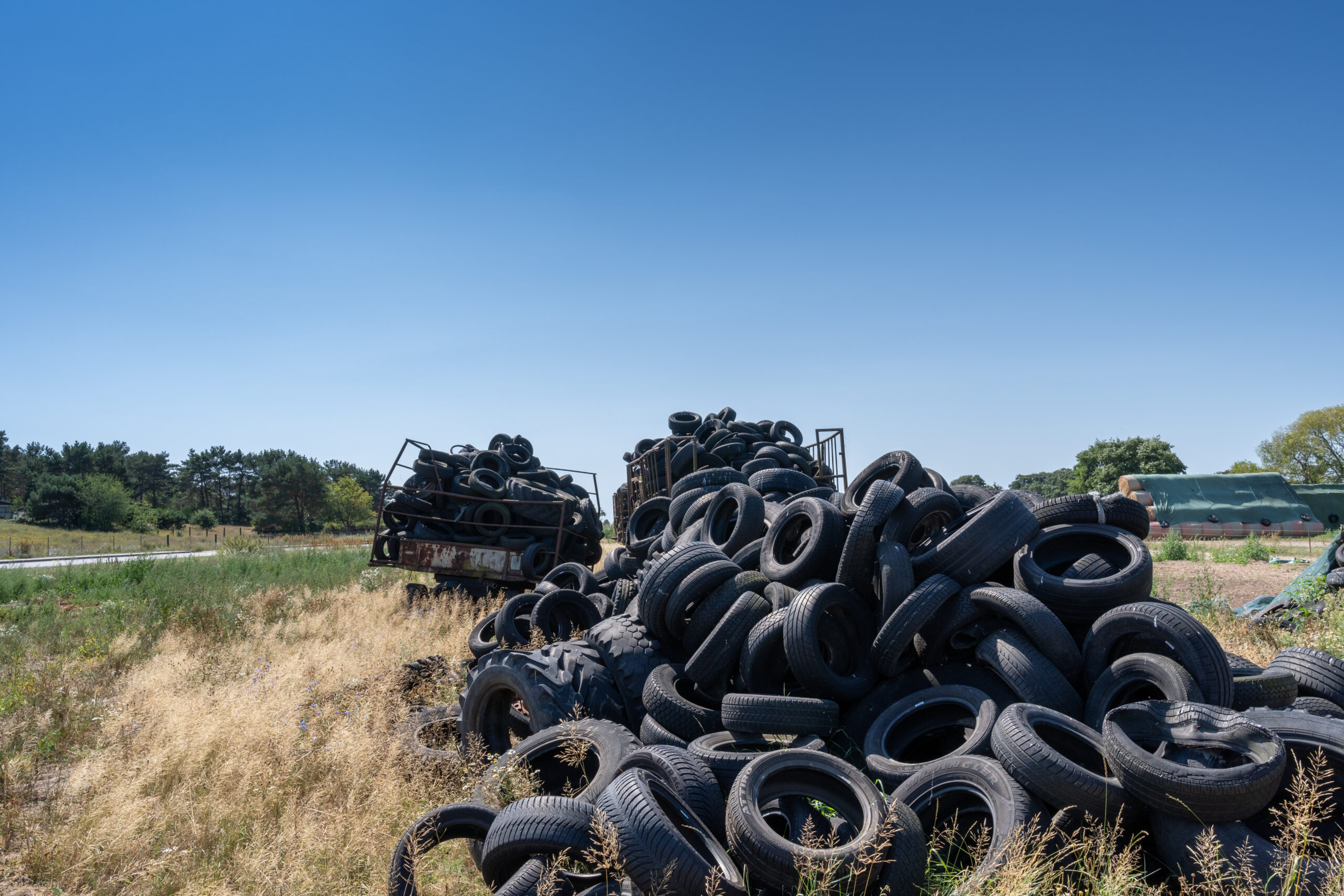Globally, more than 1 billion end-of-life tires (ELTs) are disposed of each year, with many ending up in landfills or an incinerator. At Contec, we’re committed to helping solve the problem of ELT waste using forward-thinking pyrolysis methods and cutting-edge circular industrial processes.
Treść główna
Environmental Impact Of End-of-life Tires
End-of-life tires environmental impact
ELTs have a major impact on the environment. From the manufacturing process to discarding tire waste, sustainability challenges occur at multiple points of a tire’s life cycle.
A significant amount of CO2 goes into producing new rubber tires. And when an ELT is disposed of unsustainably, the wrongful disposal contributes to land and air pollution.
In total, around the world, over 26 million tonnes of new tires are produced each year, with a product life of between 4 to 6 years.
In other words, there is a large, steady flow of ELT waste to be dealt with in the future.

Global ELT waste in numbers
When end-of-life tires are dumped or incinerated instead of recycled, the environmental impact of the waste is undeniable. Each year,
- 3.4 million tonnes of ELT waste is collected in the EU
- Globally, more than one billion ELTs are generated
- 46 per cent of ELTs end up being fully or partially incinerated, releasing millions of tons of CO2 .
Between 2018 and 2020, an estimated 18 million metric tons of CO2 was released as a result of incinerating ELTs, the equivalent of the total yearly CO2 emissions generated by 3.9 million cars. Additionally, the 1.8 billion tires manufactured each year have a large carbon footprint.
Fortunately, technology now exists to recycle and reuse ELTs into materials and products in a sustainable way. Contec is at the forefront of developing and applying these processes.
Circularity in the tire industry
In recent years, three major tire manufacturers have developed initiatives to improve sustainability and their eco-credentials. Driven by the growing global awareness of environmental issues, major tire manufacturers are investing heavily in circular and sustainable manufacturing methods. Here are a few examples of steps that tire industry leaders are taking:
Frequently asked questions on end-of-life tires
01. What are tires made of?
A typical tire is made from 30 different types of synthetic rubber, 8 types of natural rubber, 8 grades of Carbon Black, polyester, steel, nylon, silica, and around 40 other chemicals.
Most tires contain high-quality vCB as a reinforcing agent, which makes them a suitable source for rCB.
02. What is an end-of-life tire?
An end-of-life tire, or ELT, is a tire that has been worn to a point where it’s no longer safe to use on a vehicle.
03. What happens to ELTs?
Around the world, around 55 per cent of ELTs are recovered and recycled to some degree.
Much of the recycled rubber is used as surfaces for roads, playgrounds, tennis courts, football pitches, etc. Other components can be recycled from ELTs, including Carbon Black.
04. How many tires go to landfills or an incinerator?
Around 33 per cent of ELTs go to landfills or incinerators these days. The rest are reused or recycled.
However, many constituent parts are still wasted, such as Carbon Black.
05. How can we turn ELTs into new tires?
At Contec, we use an advanced ELT recycling technique known as tire pyrolysis.
The first step involves shredding the ELTs to generate a rubber granulate and removing the reinforcing steel for recycling.
The pyrolysis process begins, which thermally decomposes the rubber into gas, oil, and recovered Carbon Black particles.
The rCB particles are then refined into pellets which can be used in the manufacture of new tires.

Driving towards a cleaner future
Producing and using virgin raw materials such as virgin Carbon Black (vCB) is a waste of resources and contributes to excessive CO2 emissions. When a company uses recycled ELTs as an alternative, it’s a prime example of adopting a circular manufacturing mindset and making the tire-to-tire model real.
Growing global awareness of climate change is driving governments and businesses to adopt more environmentally-friendly manufacturing methods and industrial processes. ELTs play a big part in this vision of a cleaner, greener future.
Contec is at the forefront of this exciting new future with our pioneering rCB recovery processes. Learn about the circular products produced from ELTs.